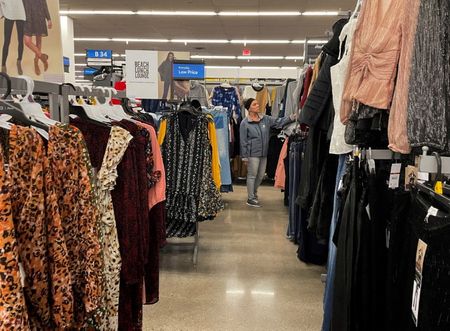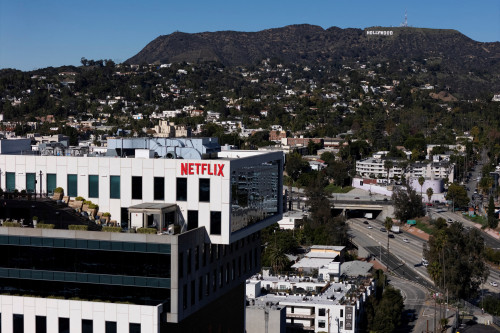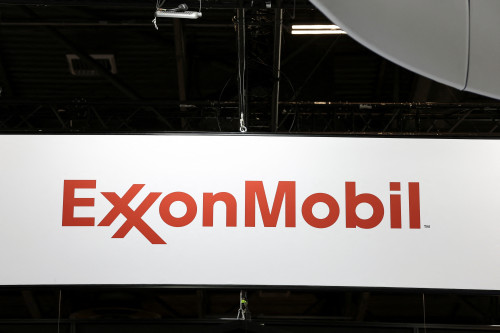By Lucia Mutikani
WASHINGTON (Reuters) – U.S. retail sales increased more than expected in July as Americans boosted online purchases and dined out more, suggesting the economy continued to expand early in the third quarter and keeping a recession at bay.
The report from the Commerce Department on Tuesday also showed consumers splurging on hobbies, sporting goods and clothing, underscoring their resilience despite the Federal Reserve’s aggressive interest rate hikes to tame inflation.
It prompted economists at Goldman Sachs to raise their third-quarter gross domestic product tracking estimate by a whopping seven-tenths of a percentage point to a 2.2% annualized rate. The economy grew at a 2.4% pace in the April-June quarter.
Demand is being underpinned by strong wage gains from a tight labor market. Though consumer spending continues to show signs of persistent strength, economists did not expect the Fed to raise rates next month, with inflation retreating.
The government last week reported that consumer prices rose moderately in July, with underlying inflation or the so-called core inflation slowing further.
“As long as core inflation continues to fall rapidly, resilient growth won’t in itself be enough to prompt further rate hikes from the Fed,” said Andrew Hunter, deputy chief U.S. economist at Capital Economics.
Retail sales jumped 0.7% last month. Data for June was revised higher to show sales rising 0.3% instead of the previously reported 0.2%. Economists polled by Reuters had forecast retail sales would climb 0.4%. Sales increased 3.2% on year-on-year basis in July.
Retail sales are mostly goods and are not adjusted for inflation. They likely received a lift from Amazon’s Prime Day promotion last month, which was the biggest on record and likely pulled forward some spending from August. Online sales accelerated 1.9% after rising 1.5% in June.
Parents also appeared to have started their back-to-school shopping early, driving up sales in other categories. Clothing store sales increased 1.0%. Consumers spent more on sporting goods, hobbies, books and musical instruments, boosting sales by 1.5%. Grocery store sales rose, as did receipts at department stores. Sales at service stations gained 0.4%.
Receipts at building material and garden equipment supplies dealers rebounded 0.7%. Sales at food services and drinking places, the only services category in the retail sales report, shot up 1.4% after rising 0.8% in June. Economists view dining out as a key indicator of household finances.
But the value of sales at auto dealerships fell 0.3% after rising 0.7% in June. Receipts at furniture stores dropped 1.8% and electronics and appliance store sales declined 1.3%.
“The report dispels any lingering recession fears, and shows how the healthy labor market is paying dividends for consumers,” said David Russell, vice president of Market Intelligence at TradeStation. “There’s a danger that today’s good news for Main Street will become bad news for Wall Street.”
Stocks on Wall Street were trading lower as investors worried about further rate hikes. The dollar fell against a basket of currencies. U.S. Treasury prices were mixed.
‘SOFT-LANDING’ ODDS RISING
Most economists, however, believe the Fed is probably done raising rates, and they are increasingly warming up to the idea that the U.S. central bank could steer the economy toward a “soft landing” rather than the recession they had been forecasting since last year. The Fed has since March 2022 raised its benchmark overnight interest rate by 525 basis points to the current 5.25% to 5.50% range.
Receding inflation is lifting consumers’ purchasing power. Households are also taking on debt to fund purchases.
Though lower-income households have exhausted excess savings accumulated during the COVID-19 pandemic, there remains a decent chunk of money stashed away to support consumer spending.
While a separate report from the Labor Department on Tuesday showed import prices rebounding 0.4% in July amid a jump in the cost of fuels, underlying imported inflation remained subdued. Import prices were down 4.4% on a year-on-year basis in July.
“It is encouraging that nonfuel prices remain subdued, which has offset some of the impact from higher fuel prices, but also signals that disinflationary pressure is widespread,” said Matthew Martin, a U.S. economist at Oxford Economics in New York.
Excluding automobiles, gasoline, building materials and food services, retail sales surged 1.0% in July. Data for June was revised lower to show these so-called core retail sales increasing 0.5% instead of the previously reported 0.6%.
Core retail sales correspond most closely with the consumer spending component of GDP. July’s solid core retail sales suggested consumer spending, which accounts for more than two-thirds of the U.S. economy, got off to a strong start in the July-September quarter after slowing in the second quarter.
There are, however, concerns that spending could shift into lower gear as the year ends. Some economists argue that slowing job growth could curb wage gains. Excess savings are being run down, and millions will resume repaying their student loans after a moratorium ended.
Credit card balances have risen sharply, with delinquencies at an 11-year high in the second quarter, according to data last week from the New York Fed. But for some economists, the labor market holds the key to consumer spending.
“The momentum for consumers will eventually run out of steam, but this will require a significant loosening of labor conditions, a process which has played out much more slowly than expected this year,” said Ben Ayers, senior economist at Nationwide in Columbus, Ohio.
(Reporting by Lucia Mutikani; Editing by Paul Simao and Chizu Nomiyama)





